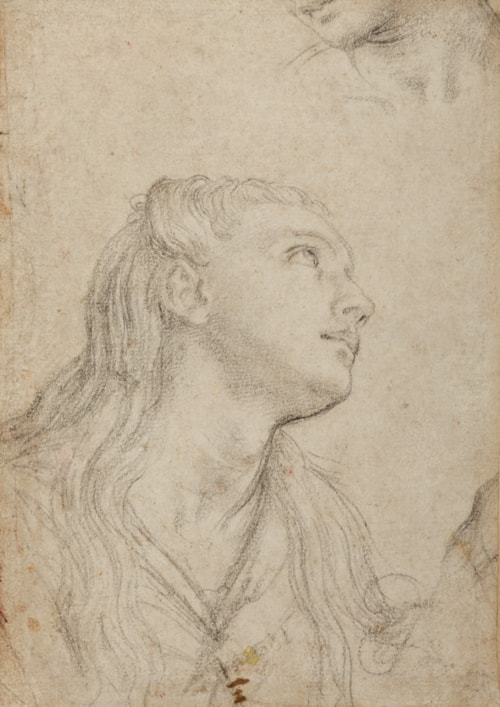
Alessandro ALLORI
Florence 1535 - Florence 1607
Biography
The Florentine painter Alessandro Allori was adopted by the Medici court artist Agnolo Bronzino at the age of around five, after the death of his father. He received his artistic training in Florence, and assisted Bronzino on cartoons for the borders of tapestries for the Palazzo Vecchio before completing his education in Rome between 1554 and 1560, when he studied the works of antiquity and Michelangelo. On his return to Florence Allori was employed on the decoration of the Montauto chapel in the church of Santissima Annunziata and also painted a work for Santa Croce, while in 1565 he contributed to the decoration of an ephemeral triumphal arch erected for the entry into the city of Joanna of Austria, the bride of Francesco I de’Medici. Allori soon gained a number of significant commissions from two of the most prominent Florentine families, the Salviati and Medici. For the former he decorated the Palazzo Salviati in Florence and the family chapel in the church of San Marco, as well as the Salviati villa at Ponte alla Badia.
Allori’s Medici commissions included two paintings for the Studiolo of Francesco I de’Medici in the Palazzo Vecchio, a Banquet of Anthony and Cleopatra and a Pearl Fishers completed between 1570 and 1571. (The Pearl Fishers was painted on slate, and Allori also appears to have been one of the first artists to paint on lapis lazuli.) As court painter to the Medici Allori worked at their villa at Poggio a Caiano, where he completed a cycle of frescoes for the salone grande that had been begun by Jacopo da Pontormo, Francesco Franciabigio and Andrea del Sarto some fifty years earlier. The head of one of the most productive and busy workshops in Florence, Allori produced numerous paintings and altarpieces for churches in Florence and elsewhere in Tuscany. After around 1580 he began to move away from the cold and somewhat polished style of Bronzino in favour of a more refined, poetic and spiritual manner, best seen in his late religious pictures. He was active as a portrait painter and tapestry designer, serving as the director of the Arrazeria Medicea, the granducal tapestry works. Allori’s career marks the culmination of a long and prominent succession of Florentine painters that dominated art in Tuscany for over a century, beginning with Andrea del Sarto and passing through his pupil Jacopo Pontormo to that artist’s own apprentice Bronzino, who was in turn Allori’s master. Allori’s son Cristofano became a leading member of the succeeding generation of Florentine painters of the early Baroque period.


